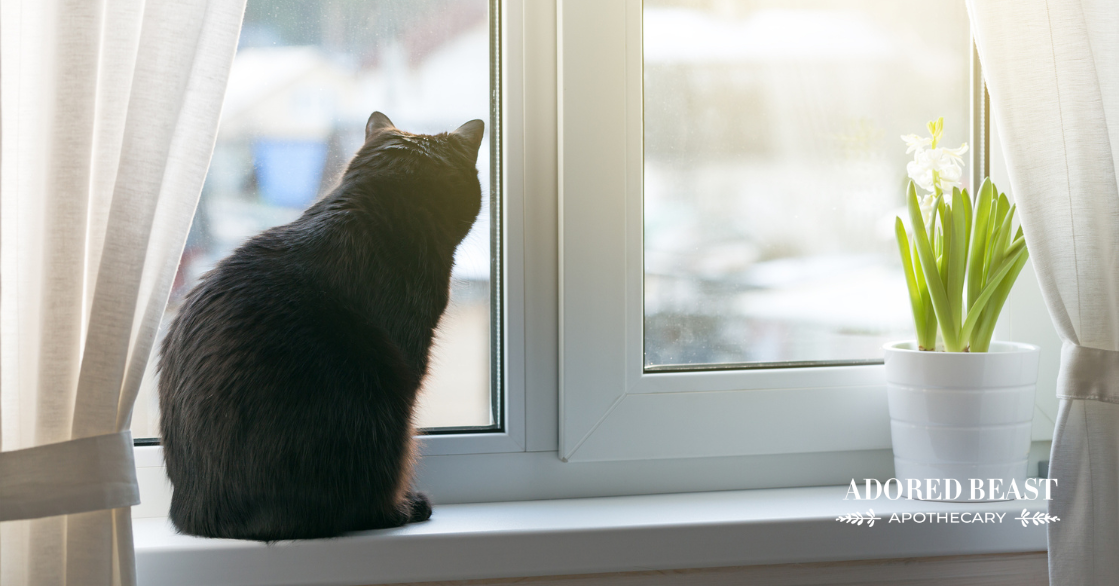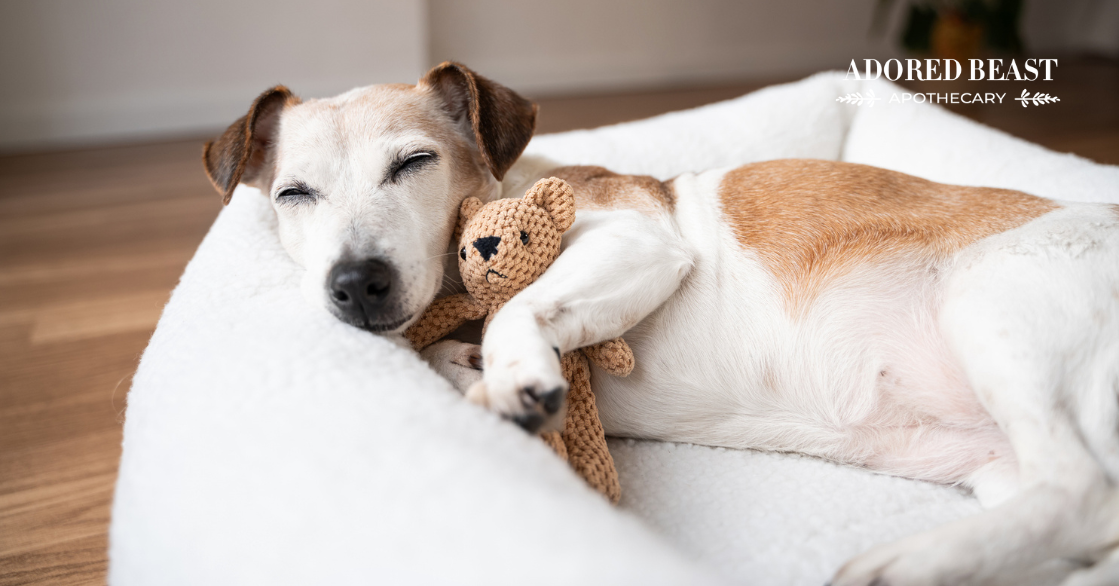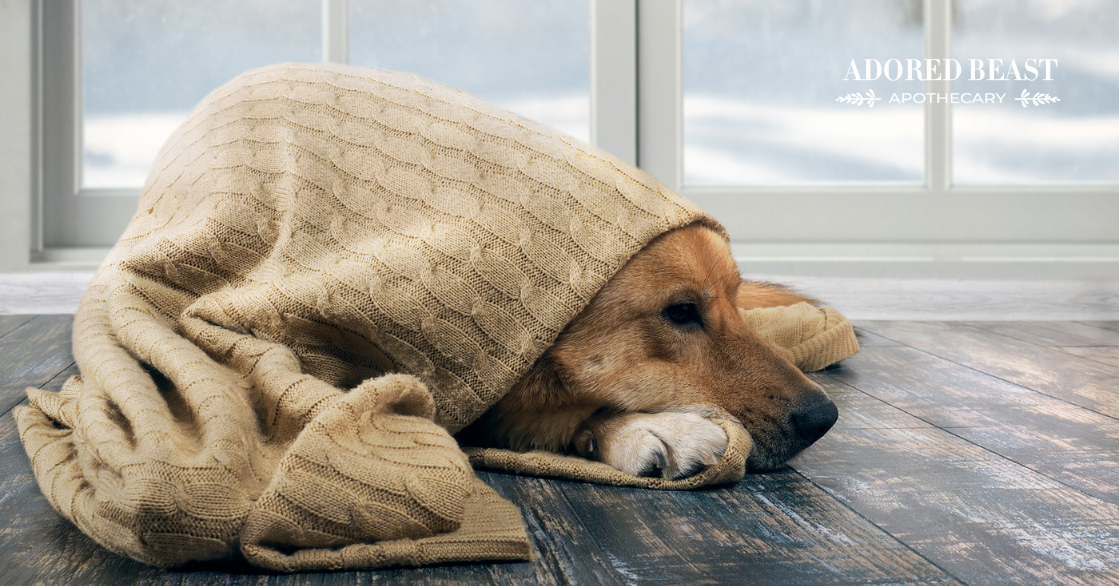For years, separation anxiety was thought to be “a dog thing.” Cats, with their famously independent reputations, were believed to be unfazed by time alone. But as any cat parent knows, this isn’t always true. Many cats form deep, emotional bonds with their people… and so that means, for some, our leaving can be a source of stress.
In fact, because cats often mask their stress, their signs can be subtle at first. Understanding the early clues of separation anxiety in cats and supporting your furry feline with gentle, natural strategies can make a world of difference.
Do Cats Get Separation Anxiety?
Absolutely. Separation anxiety in cats (and dogs, too) occurs when an animal becomes distressed due to being left alone or separated from a specific person. While dogs often display obvious distress, cats may show quieter (but equally meaningful) signs.
Some cats develop separation anxiety after a major life change, such as moving homes, losing a companion (animal or human), a schedule change, or increased time alone. Others may simply be more sensitive, social, or attached from an early age.
As mentioned, the signs in cats can be more subtle. Remember, cats rarely “act out” for no reason – most behavioural changes are communication. Here’s what separation-related stress can look like:
- Excessive vocalizing when you leave or as soon as you return
- Clinginess – does your cat follow you from room to room?
- Destructive behaviour, like scratching furniture or knocking things down
- Overgrooming, often resulting in bald patches
- Peeing or pooping outside the litter box (particularly near doorways or personal items)
- Pacing or restlessness
- Changes in appetite – eating too fast, too little, or skipping meals when alone
- Vomiting, often from stress
- Withdrawn or depressed behaviour
- Hypervigilance, especially when you’re preparing to leave
If the behaviour only happens when you’re gone – or when you’re about to go – that’s typically a strong indicator of separation anxiety.
Gentle Ways to Support a Cat with Separation Anxiety
Separation anxiety in cats isn’t solved overnight. Cats need time, reassurance, and structure to regain confidence. Here are natural and lifestyle-based ways to help soothe your kitty.
1. Enrich Their Environment
A mentally stimulated cat is a more secure cat. Try:
- Window perches so your cat can birdwatch
- Puzzle feeders to keep meals engaging
- Cat-safe plants (like wheatgrass or catnip)
- Rotating toys to keep things interesting
- Vertical spaces, such as shelves or cat trees
Enrichment helps prevent boredom and channels excess energy in a healthy way. We have lots of other great ideas to beat boredom in this post: How to Tell if Your Cat is Bored (& How to Engage Them).
2. Create Predictability and Routine
Cats thrive on stability. They feel safer with a routine.
- Keep feeding times consistent.
- Use predictable cues before you leave (but keep them low-key).
- Create a calming pre-departure routine, like soft music or an interactive toy.
This helps reduce the anticipatory anxiety that can be worse than the alone time itself.
3. Provide Comfort Items
Your scent can be incredibly calming for a cat with separation anxiety.
Try leaving:
- A worn T-shirt in their favourite sleeping spot
- A blanket that smells like you
- A bed placed near a sunny window
4. Use Natural Calming Supplements
Gentle, holistic support can help settle your cat’s nervous system. Consider:
- L-theanine – An amino acid that promotes relaxation without sedation. It is often used for stress and anxiety.
- Valerian root – A natural herb that can calm anxious behaviour – it is best used in small amounts and in feline-safe formulations.
- Chamomile (pet-safe blends only) – This fave can reduce nervous tension and soothe the digestive system if stress causes tummy upset. BUT, because cats metabolize chamomile differently than dogs, we recommend starting really low, and working up very slowly. Stick to small amounts, always. Also, we only use it when needed, never long-term.
- CBD (hemp-derived, pet-formulated) – CBD is well-known for its calming effects. Start low and slow and give it time. If you’re new to CBD oil, there are more tips in this post: CBD Oil for Pets: How to Use it.
- Calming pheromone diffusers – While not a supplement, calming pheromones can help create a sense of safety in the home.
- Homeopathy – Homeopathic remedies like aconite and arnica are great for fear and anxiety – we’ve put them together in our Your Go 2 for that exact reason!
5. Implement Gradual Independence Training
Instead of long absences right away:
- Teach your cat that it’s okay to be alone for short periods.
- Step into another room for a minute or two and return before your cat gets distressed.
- Slowly increase the time as their confidence grows.
This builds emotional resilience in a safe, controlled way.
6. Keep Departures and Arrivals Calm
As tempting as it is to say long goodbyes, it can actually increase anxiety.
- Keep your exit routine relaxed and neutral
- Greet your cat calmly when you get home
- Avoid reinforcing panic with big dramatic reunions
Your energy sets the tone.
7. Consider a Companion (Sometimes)
For some cats, a feline friend can be comforting. For others, it increases stress. If your cat is social and previously lived with another animal, this might help – but it should be considered carefully and not as a quick fix.
Separation anxiety in cats is real, but it’s also manageable. Progress may move slowly, and that’s okay. Healing an anxious nervous system takes time, consistency, and compassion. And remember, be patient – there is no quick fix here.
Every cat is unique, and what works beautifully for one may take longer for another. Focus on creating safety, meeting their emotional needs, and offering gentle support. Small wins add up, and before long, your cat can feel more secure, confident, and at ease, even when home alone.












